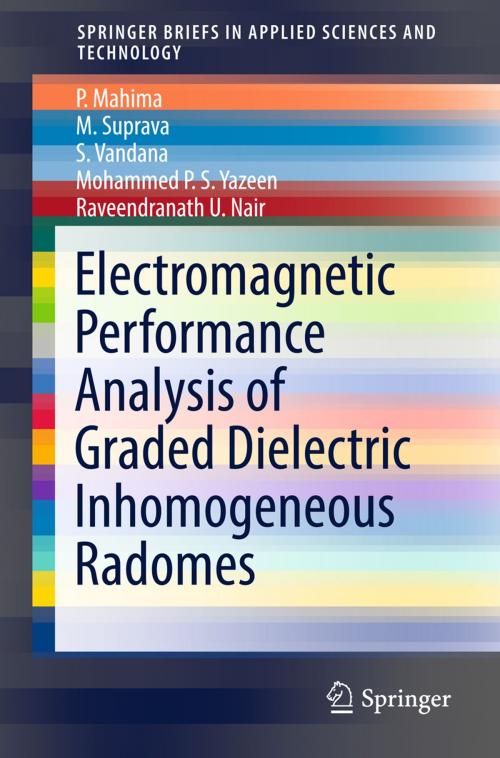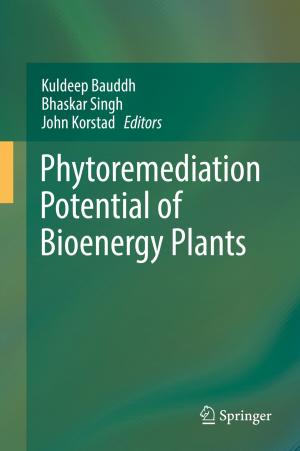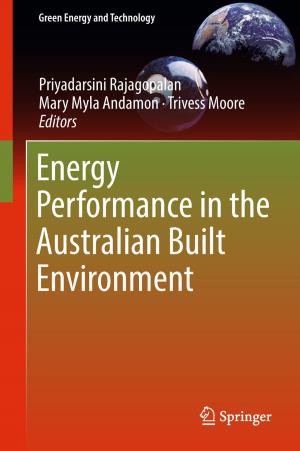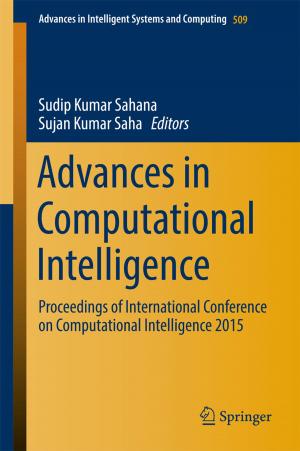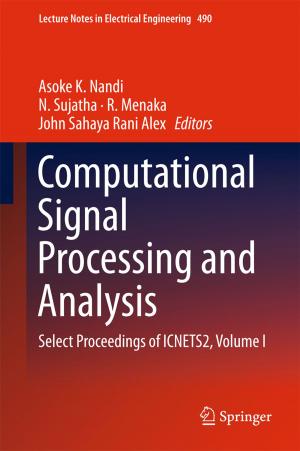Electromagnetic Performance Analysis of Graded Dielectric Inhomogeneous Radomes
Nonfiction, Science & Nature, Technology, Microwaves, Telecommunications| Author: | P. Mahima, M. Suprava, S. Vandana, Mohammed P.S. Yazeen, Raveendranath U. Nair | ISBN: | 9789811078323 |
| Publisher: | Springer Singapore | Publication: | March 14, 2018 |
| Imprint: | Springer | Language: | English |
| Author: | P. Mahima, M. Suprava, S. Vandana, Mohammed P.S. Yazeen, Raveendranath U. Nair |
| ISBN: | 9789811078323 |
| Publisher: | Springer Singapore |
| Publication: | March 14, 2018 |
| Imprint: | Springer |
| Language: | English |
This book reports on a new radome wall configuration based on an inhomogeneous planar layer, which overcomes current fabrication constraints in radome design and yields improved electromagnetic (EM) characteristics. The book also includes a detailed description of radomes and antenna-radome interaction studies for different radome wall configurations. The radome wall was designed using the equivalent transmission line method (EQTLM), since it requires less computational speed and provides accurate results. In order to substantiate the accuracy of the results obtained using EQTLM, the simulated results based on full wave methods like CST Microwave Studio Suite are also included. The EM performance analysis of the antenna-radome system for two radome shapes, tangent ogive (for airborne applications) and hemispherical (for ground-based applications), was performed using Geometric Optics Method in conjunction with the Aperture Integration Method. To show the efficacy of the new design, a comparison of performance characteristics between the novel radome and conventional wall configurations is also included. Lastly, it presents antenna-radome interaction studies for various aperture distributions. The book offers a unique resource for all researchers working in the area of microwave radomes.
This book reports on a new radome wall configuration based on an inhomogeneous planar layer, which overcomes current fabrication constraints in radome design and yields improved electromagnetic (EM) characteristics. The book also includes a detailed description of radomes and antenna-radome interaction studies for different radome wall configurations. The radome wall was designed using the equivalent transmission line method (EQTLM), since it requires less computational speed and provides accurate results. In order to substantiate the accuracy of the results obtained using EQTLM, the simulated results based on full wave methods like CST Microwave Studio Suite are also included. The EM performance analysis of the antenna-radome system for two radome shapes, tangent ogive (for airborne applications) and hemispherical (for ground-based applications), was performed using Geometric Optics Method in conjunction with the Aperture Integration Method. To show the efficacy of the new design, a comparison of performance characteristics between the novel radome and conventional wall configurations is also included. Lastly, it presents antenna-radome interaction studies for various aperture distributions. The book offers a unique resource for all researchers working in the area of microwave radomes.
